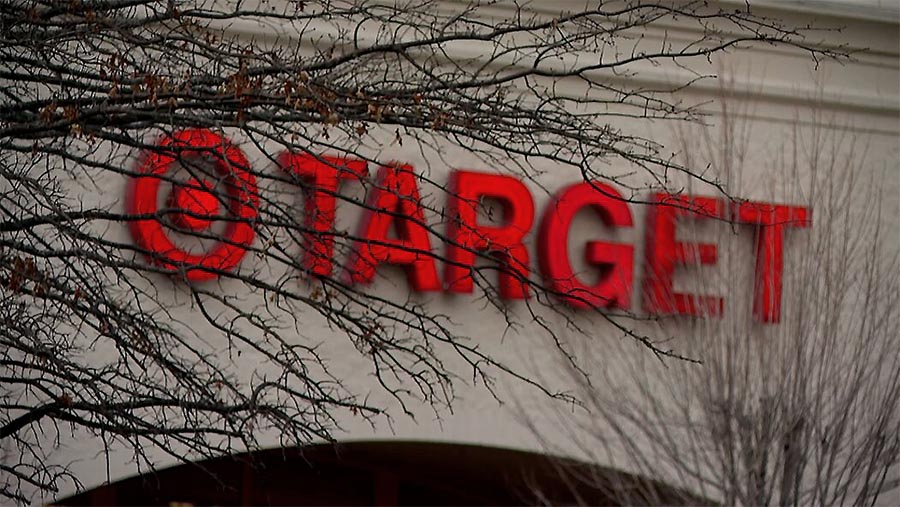Target Corp. reported a steep decline in earnings due to planned markdowns to support the chain’s inventory reduction efforts. Total sales grew 3.3 percent due to steady traffic growth on top of unprecedented increases over the last two years. The discounter maintained its guidance for the year.
Highlights of the quarter include:
- Comparable sales grew 2.6 percent, on top of 8.9 percent growth last year.
- Comparable sales growth reflected 2.7 percent traffic growth.
- The growth reflected continued strength in Food & Beverage, Beauty and Household Essentials.
- The company gained a unit share in all five of its core merchandising categories in the second quarter.
- Store comparable sales increased 1.3 percent on top of 8.7 percent growth last year.
- Digital comparable sales grew 9.0 percent, following a growth of 9.9 percent last year.
- Same-day services (Order Pickup, Drive Up and Ship) grew nearly 11 percent this year, led by Drive Up, which grew in the mid-teens on top of more than 80 percent last year.
- More than 95 percent of Target’s second quarter sales were fulfilled by its stores.
- The operating margin rate of 1.2 percent reflected gross margin pressure from actions to reduce excess inventory as well as higher freight and transportation costs.
- As a result of the company’s inventory actions in the second quarter, the company reduced its inventory exposure in discretionary categories while investing in growing frequency categories. Fall season receipts in discretionary categories were reduced by more than $1.5 billion.
The company reported second-quarter GAAP earnings per share (EPS) of $0.39, down 89.2 percent from $3.65 in 2021. Second quarter Adjusted EPS of $0.39 decreased 89.2 percent compared with $3.64 in 2021. Wall Street’s consensus estimate was 79 cents a share.
“I’m really pleased with the underlying performance of our business, which continues to grow traffic and sales while delivering broad-based unit-share gains in a very challenging environment,” said Brian Cornell, chairman and chief executive officer, Target Corp. “I want to thank our team for their tireless work to deliver on the inventory rightsizing goals we announced in June. While these inventory actions put significant pressure on our near-term profitability, we’re confident this was the right long-term decision in support of our guests, our team and our business. Looking ahead, the team is energized and ready to serve our guests in the back half of the year, with a safe, clean, uncluttered shopping experience, compelling value across every category, and a fresh assortment to serve our guests wants and needs.”
Fiscal 2022 Guidance
While the company is planning cautiously for the remainder of the year, current trends support the company’s prior guidance for full-year revenue growth in the low- to mid-single-digit range and an operating margin rate in the range of around 6 percent in the back half of the year.
Operating Results
Comparable sales grew 2.6 percent in the second quarter, reflecting comparable store sales growth of 1.3 percent and comparable digital sales growth of 9.0 percent. Total revenue of $26.0 billion grew 3.5 percent compared with last year, reflecting total sales growth of 3.3 percent and a 14.8 percent increase in other revenue. Operating income was $321 million in the second quarter 2022, down 87.0 percent from $2.5 billion in 2021, reflecting a decline in the company’s gross margin rate.
Second quarter operating income margin rate was 1.2 percent in 2022, compared with 9.8 percent in 2021. Second quarter gross margin rate was 21.5 percent, compared with 30.4 percent in 2021. This year’s gross margin rate reflected higher markdown rates, driven primarily by inventory impairments and actions taken to address lower-than-expected sales in discretionary categories, as well as higher merchandise, inventory shrink, and freight costs. Gross margin rate was pressured by increased compensation and headcount in our distribution centers, the costs of managing excess inventory, and higher per-unit last-mile shipping costs. Second quarter SG&A expense rate was 19.2 percent in 2022, compared with 19.3 percent in 2021, reflecting the impact of lower incentive compensation, partially offset by cost increases across our business, including investments in hourly team member wages.
Interest Expense and Taxes
The company’s second-quarter 2022 net interest expense was $112 million, compared with $104 million last year, reflecting higher commercial paper and average long-term debt levels.
Second quarter 2022 effective income tax rate was 15.8 percent, compared with the prior year’s rate of 23.4 percent, reflecting the impact of tax benefits on lower pre-tax earnings compared with last year.
Capital Deployment and Return On Invested Capital
The company paid dividends of $417 million in the second quarter, compared with $336 million last year, reflecting a 32.4 percent increase in the dividend per share, partially offset by a decline in average share count.
The final settlement of an Accelerated Share Repurchase (ASR) arrangement, which the company initiated during the first quarter of 2022 occurred in early June. As a result, the company recorded the repurchase of $2.6 billion worth of its shares through the ASR, reflecting the retirement of 12.5 million shares of common stock at an average price of $211.58. As of the end of the second quarter, the company had approximately $9.7 billion of remaining capacity under the repurchase program approved by Target’s Board of Directors in August 2021.
For the trailing twelve months through the second quarter of 2022, the after-tax return on invested capital (ROIC) was 18.4 percent, compared with 31.7 percent for the trailing twelve months through the second quarter 2021. The decrease in ROIC was driven primarily by lower profitability in the second quarter 2022.
















